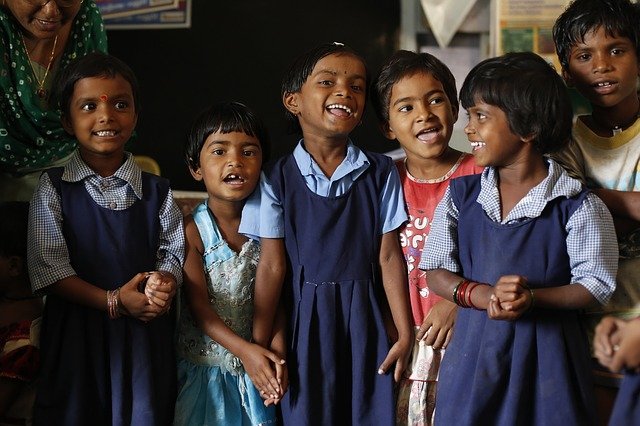
You have many options when it comes to becoming a teacher here in Illinois. You may be able find a program that is more flexible depending on the current teacher shortage. The Illinois Board of Education has more information about the programs.
Master of Arts (MAT) in Teaching
The Master of Arts in Teaching (MAT), Illinois program is designed to prepare middle-level educators. This program helps you to develop the skills, knowledge, and dispositions that are necessary to be a successful educator. The program requires a candidate to complete six semesters of online coursework and complete 45 hours of field-based learning experiences in public school settings. Additionally, candidates must complete 200 hours clinical teaching experience and a 16-week placement as a student teacher. After the completion of the program, candidates will be issued an Illinois Middle Grade Professional Teacher License.
For those who wish to teach in the state, the MAT degree program may be a good choice. The degree program focuses on student-centered teaching, and requires extensive coursework in the field of education. The courses that are most commonly offered include classroom management, learning theories, and measurement and assessment methodologies. In addition, prospective teachers can choose to specialize in a subject, cultural factors, or societal issues.
ICTS Basic Skills Test
The ICTS Basic Skills Exam, one of three required tests for becoming a teacher in Illinois, is one of these. The test is administered by Pearson and is designed to assess the skills and knowledge all teachers need. Illinois doesn't have reciprocity with all other states so applicants must fulfill its requirements to be a teacher there.

You must create an account and register for the ILTS website if you have not taken the exam before. This account will grant you access to helpful resources and will send you admission tickets for the testing center. You will need to present this ticket with a valid form of identification when you arrive at the testing center. Make sure you allow enough time to take the test.
ILTS Assessment of Professional Teaching
The ILTS Assessment of Professional Teaching (APt) is a test designed for candidates preparing to become certified as a teacher in the state of Illinois. The test is composed of 120 multiple-choice and two short-answer questions. It is divided into four areas: development, learning, instruction, assessment, and professional context. Mometrix Test Preparation has a practice test that prepares you for the ILTS Assessment of Professional Teaching.
Incoming teachers in Illinois must take the ILTS Test. The test covers topics such as human development, cognitive processes associated with learning, student diversity, communication theory, and how individuals influence groups. Additionally, it tests knowledge of various assessment techniques and approaches to planning and delivering instruction. It also assesses your ability to communicate data about student performance.
ILTS content-area testing
It is a crucial component to becoming a teacher here in Illinois. The test measures the knowledge and skill of prospective teachers in specific content areas. While many teachers already know what subject they want to teach and have a general idea of their preferred subject, the ILTS content test will help them determine how prepared they are to teach the subject. There are usually about 125 questions on the test and a time limit of three hours and 45 minutes.
ILTS exam questions include content-area question. However, ILTS also includes short open-ended essays or responses. Although there are usually two sessions to the exam, most exams only have one session. The questions are scored using a scale from 100 to 300. Don't be discouraged if you fail to score high on your first attempt. You can always take the exam over again.

ILTS academic proficiency test
If you want to become an Illinois teacher, you'll need to pass the ILTS test of academic proficiency. This test tests a teacher’s reading, writing, and math skills. Use the right materials and preparation techniques to pass this test. In addition, you'll need to take at least one full practice test. A written response is required to score the test. It should be concise and specific.
The ILTS test is designed by Pearson, which administers the exam. It is an exam that all prospective Illinois teachers must pass before they can receive their teaching license. For anyone who wants to teach in Illinois public school, the ILTS examination is non-negotiable.
FAQ
What is the purpose of schooling or education?
Education should prepare students for work. It is not only an academic pursuit, but also a social activity in which children can learn from each other and gain confidence through participating in sports, music, or art. Education is about learning to think critically and creatively so that students can be self-reliant and independent. What does it mean to have good educational standards?
Education standards that ensure all students reach their full potential are good. They establish clear goals for teachers to work towards with their students. Good educational standards are flexible enough to enable schools to meet changing needs. Equal opportunity for all children, regardless of background, must be provided.
Are there special skills required to work in my chosen field?
If you want to become a lawyer, you'll need good written communication skills. A nurse must have the ability to communicate well. You will need to be able to use math skills to become an accountant. These are just a few of the many examples. Consider all the activities you love. What type of job can you do to keep doing what you love? You will need to know how to design machines and structures if you want to become an engineer. In order to excel in this area you will also need to master basic math. A basic understanding of numbers and statistics is necessary to succeed in business. To be a successful teacher, you will need excellent communication skills. You need to be able help and teach others.
What is a vocational college?
Vocational schools provide programs that prepare people for a specific job. These schools may offer general education and training in the skills required by employers.
Vocational education is an essential part of our society as it helps young people acquire the skills necessary to succeed in their lives. It ensures that all students have access to high-quality learning opportunities.
A vocational school gives its students many options. This includes certificates, diplomas/degrees, apprenticeships, certificates as well college transfer programs and other postsecondary credentials. Vocational schools provide both academic and practice-oriented subjects such as math and science, English and social studies.
What is early education for children?
Early Childhood Education focuses on helping children grow into happy and healthy adults. It includes everything from teaching them how to read to prepare them for kindergarten.
Early childhood education is designed to help children grow and learn by providing them with appropriate experiences.
Early childhood educators often have to assess each child's developmental needs. This assessment is used to determine if a specific program would be beneficial for each child.
Early childhood programs also provide opportunities for parents to interact with teachers and other professionals who have experience working with young children.
Early childhood education also requires parents to play a significant role. They should know how to take care of their children properly and provide support and guidance when necessary.
Parents can also participate in activities designed to teach their children skills they will need throughout their lives.
Sometimes, early childhood education is also called preschool education. However this term is interchangeable with daycare centers. Prekindergarten education starts around three years ago, and early childhood education is similar.
What is homeschooling, exactly?
Homeschooling is an educational method where children are educated at home by their parents. It can also be called homeschooling, self-education and private education.
Family members who want to teach their children at home can opt for homeschooling. This method allows children to receive a quality education from home.
They educate their children right from birth through high school. They choose which subjects to study and how long each subject should last. The student learns everything in their own time.
Parents choose when to start teaching their children. Schools recommend that children begin classes between the ages of four and twelve. However, some families choose to wait to begin teaching their children until they reach kindergarten.
Parents can use any number or resources to assist them in learning the curriculum. Books, videos, websites, and even magazines provide valuable lessons.
Many families find homeschooling fits well into their busy lives. Parents can spend more time with their children than in traditional public schools.
Statistics
- Among STEM majors, that number is 83.5 percent. (bostonreview.net)
- These institutions can vary according to different contexts.[83] (en.wikipedia.org)
- Globally, in 2008, around 89% of children aged six to twelve were enrolled in primary education, and this proportion was rising. (en.wikipedia.org)
- They are also 25% more likely to graduate from high school and have higher math and reading scores, with fewer behavioral problems,” according to research at the University of Tennessee. (habitatbroward.org)
- Data from the Department of Education reveal that, among 2008 college graduates, 92.8 percent of humanities majors have voted at least once since finishing school. (bostonreview.net)
External Links
How To
What is vocational Education?
Vocational education is an educational program that prepares students to work after high school and college. It teaches them specific skills for specific jobs (such as welding). It also includes on-the-job training in apprenticeship programs. Vocational education is distinct from general education as it focuses more on training individuals for specific jobs than on learning broad knowledge that can be used in the future. Vocational education does not prepare students for university, but it helps them find work after graduation.
Vocational education can take place at all levels of schooling. This includes primary schools, secondary schools and colleges, universities as well as colleges, technical institutes, technical colleges, trade schools, community college, junior colleges, four-year colleges, and colleges. There are also many specialty schools like nursing schools and law schools, legal schools, medical schools and dental schools as well as veterinary medicine, veterinary medicine, firefighting, police academies and military academies. These schools offer both practical and academic training.
Over the last decade, several countries have made significant investment in vocational education. However, it is not clear if vocational education is effective. Some critics believe it doesn't help students get hired, while others claim that it helps prepare them for life after high school.
The U.S. Bureau of Labor Statistics has estimated that 47% of American adults hold a postsecondary certificate or degree related to their current occupation. This figure is higher among those with more education: 71% of workers aged 25-29 with a bachelor's degree or higher are currently employed in fields requiring postsecondary credentials.
In 2012, the BLS reported that nearly half of the nation's adult population had at least some form of postsecondary credential. About one-third of Americans held a two-year associate degree, while about 10 percent held a four-year bachelor's degree. One fifth of Americans had a masters degree or doctorate.
The median annual salary for people with a bachelor's was $50,000. This compares to $23,800 for those who don't have a degree. For advanced degrees, the median annual wage was $81,300.
For those who did no high school, the median salary was only $15,000. A person with a lower high school diploma earned $13,000 annually.